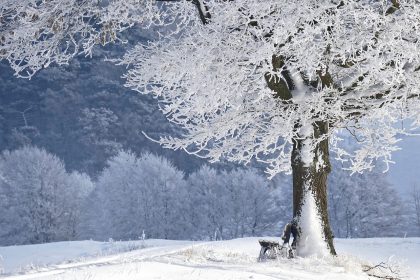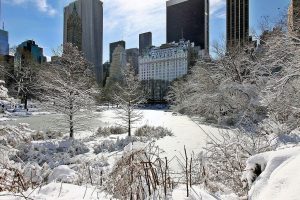Is Your Commercial HVAC System Ready For Winter?
For the 2022-2023 winter season, the Farmer’s Almanac predicts heavy snow and record-breaking cold temperatures. Right now, it’s too early to tell if that forecast will come true. What it’s not too soon for is getting your HVAC system ready for colder weather. Here are some practical steps to ensure you are prepared for the next big cold snap.
#1. Promote Good Airflow
Your system can produce adequate heat and still be ineffective if you do not have good airflow. Accordingly, you should:
- Change your air filters at least monthly
- Remove dust, cobwebs, etc. from register vents and vacuum inside
- Clear the area within a three-foot area of your vents and air handler
- Arrange office furniture so that tall bookcases and filing cabinets are not directly underneath ceiling vents
#2. Check and Clean Out Condensation Lines
All HVAC units have condensation lines that move water throughout the system to an external drain. Leaves, sticks, and other debris can accumulate inside them, making it difficult for condensation to move normally. Standing water inside these lines leaves them vulnerable to freezing and breaking.
Locate your condensation lines and check them occasionally for blockages. Rooftop units may have drains inside the roof itself and PVC pipes running down the side of your building. With indoor systems, you may notice a small pipe sticking out of the side of your building.
After you’ve removed debris, go ahead and wrap your condensation lines with a waterproof material. Use a foam pipe wrap or sheets of Styrofoam and secure tightly with heavy-duty duct tape. Avoid using regular insulation, as it can absorb and hold water. As such, it could actually wind up causing damage rather than keeping your pipes safe.
#3. Get Your Landscaping in Order
One cubic foot of ice weighs more than 57 pounds. It’s easy to see how tree branches can buckle under even a small amount of ice. Falling limbs could potentially crush or damage outdoor HVAC units.
Check your outdoor appliances to see if there are any overhanging branches that might fall during an ice storm. If necessary, remove tree limbs now to prevent unnecessary damage later. Trim shrubbery and rake up leaves and debris so it doesn’t blow into your system during a heavy windstorm.

#4. Cover Outdoor Equipment
Rats, squirrels, mice, and chipmunks all love to nest in outdoor air conditioners. These animals can cause quite a bit of damage if they happen to chew through wires. The best way to keep them out is to wrap your outdoor units in plastic or a fitted cover. Doing so will keep excess moisture from building up during the winter months, as well.
#4. Make a Fire Plan
More fires happen during winter than at any other time during the year. While you are getting your HVAC system in shape, it’s also a good idea to go over your fire plan. Some things to keep in mind include:
- Replacing any smoke or carbon monoxide detectors that are over ten years old
- Installing fire extinguishers in strategic locations and inspecting them monthly
- Ensuring exit routes are clearly marked
- Performing routine fire drills
#5. Schedule an Inspection
When temperatures drop, having adequate heat can make or break your business. Accordingly, you don’t want to wait until the first winter storm to discover there’s a problem with your HVAC system. Regular maintenance is the best way to avoid unexpected repairs and ensure the comfort and safety of your employees.
Schedule an inspection and tune-up with South Jersey Heating and Cooling before winter arrives. Please contact us today to schedule an appointment.









